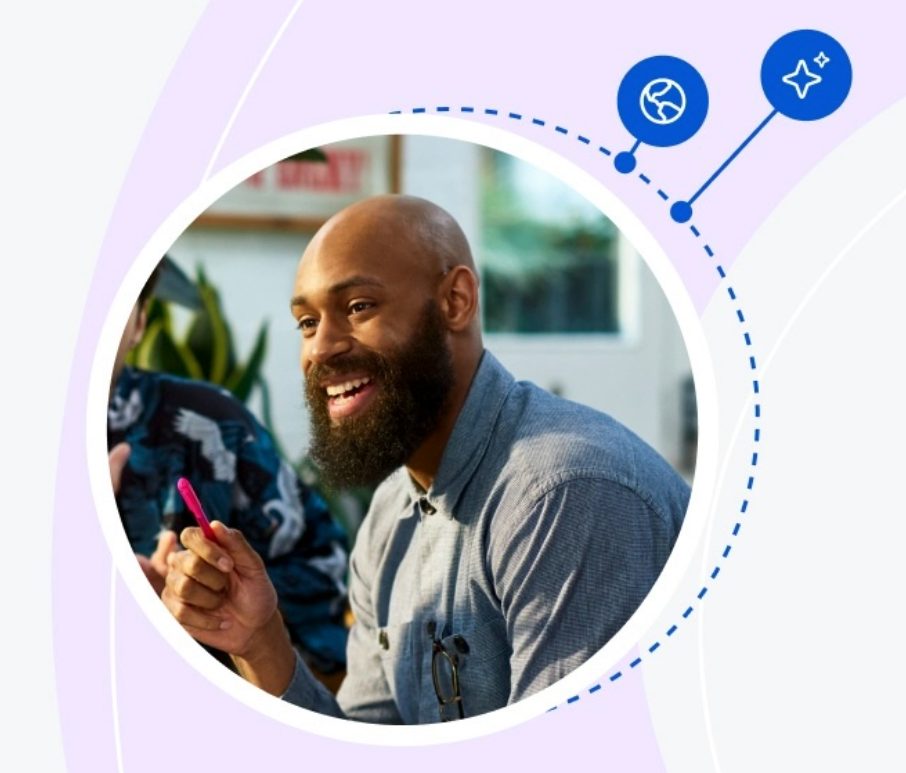The Power of Student-Centric Learning in Corporate Training
Student-centric learning allows employees at all stages to take control of their learning journey and access the benefits of high-quality professional development opportunities.
![[Featured Image] A small group of employees engages in student-centric learning at their workplace.](https://d3njjcbhbojbot.cloudfront.net/api/utilities/v1/imageproxy/https://images.ctfassets.net/2pudprfttvy6/1NUnm9Zw8G9EGCAt06QVqC/6d5542bdab374e5998fff11490a1a282/GettyImages-576902990.jpg?w=1500&h=680&q=60&fit=fill&f=faces&fm=jpg&fl=progressive&auto=format%2Ccompress&dpr=1&w=1000)
By prioritizing student-centric learning, you can create a corporate training environment where employees actively engage in their education, are motivated to continue their professional development, and align their goals with overall organizational objectives. Furthermore, according to Forbes, “prioritizing employee development has some added advantages that truly make it a win-win proposition. From increased job satisfaction and loyalty to better retention rates—and ultimately better employees—continued learning benefits everyone involved” [1].
This article will help you discover student-centric learning, the benefits organizations see using this model, and why it may enhance your corporate training environment.

What is student-centric learning?
Student-centric learning, as the name suggests, is an educational style in which the learner takes some control over which topics they study and how the content is delivered. This teaching style aims to motivate the learner to delve into the subject matter in a useful and relevant way that is relevant to their background and interests.
Your employees are most likely diverse in their experience levels, backgrounds, beliefs, and skill sets. You can foster higher levels of internal motivation and content engagement by allowing employees to co-create the learning process according to their needs.
Examples of student-centric learning
While student-centric learning might sound appealing, it’s normal to feel unsure how to implement these techniques—group work, feedback, and case studies—especially if you currently use traditional approaches.
In general, you want to implement activities within the learning space that allow learners to think critically and make decisions using their knowledge and skills. You can create learning activities that are project-based, inquiry-based, or collaborative. Some ways to do this include the following:
The instructor poses a question, and learners discuss their thoughts in small groups.
Learners provide feedback at the end of each class on what material they found most relevant and what they would like to continue exploring.
The instructor provides a case study, and learners draw inferences and make informed decisions based on the information they receive. The instructor does not provide a solution when presenting the case study. For more complex case studies, learners may have assigned roles or positions in the discussion.
Learners take a test twice. The first time, they do so alone, and the second time, they do so in a small group and discuss differences in answers.
Learners evaluate each other’s writing and ideas and then discuss them collectively.
Key components of student-centric learning
Several core principles differentiate this method from other styles when creating a student-centric learning plan. You may focus on creating a training plan that offers:
Personalized learning options
When creating a personalized learning environment, you ensure that you can modify instruction delivery and content according to the preferences of the individual learner. Essentially, learners can decide which content is most appropriate for their needs and seek out this information.
Active learning
Active learning facilitates ownership, keeping learners engaged with the material and in charge of pushing the curriculum forward. Examples of active learning would be asking learners to create questions independently, facilitating classroom discussions, encouraging self-assessments, and engaging them in interactive lectures.
Competency-based learning
Instead of requiring learners to have a certain amount of classroom instruction time or a predetermined learning pace, you can have them move to the next unit as soon as they demonstrate proficiency in the topic. This not only helps learners reach the most relevant information for their current skill level, but it also helps differentiate the type of support each employee needs to reach learning goals.
Read more: Fostering a Learning Culture within Your Company: Your 2025 Guide
Flexible scheduling
In contrast to a typical course schedule, learners can complete their coursework at any day or time that suits their needs. This provides access to high-quality learning opportunities for employees with a wide range of personal and professional responsibilities.
Collaborative environment
In your student-centric training modules, you want to encourage employees to collaborate and feel safe sharing their insights. This type of environment opens the discussion to people with varied backgrounds and experiences, and these diverse teams are more effective at solving problems because they bring more creativity and innovation into the group.
Why choose student-centric learning in your organization?
Several benefits of student-centric learning may make it a desirable model for your organizational training. For one, your employees are more likely to retain the information they learn if they are interested in the material and see how it will enhance their professional skill set. Because employees can drive the learning pathway, they can intentionally align their learning with their goals.
Student-centric models have also been shown to have several psychological benefits for learners. In this learning model, they tend to feel more confident in their knowledge following course completion and have more positive attitudes toward the material. This, along with increased critical thinking and creative problem-solving skills, can help build a productive and efficient workforce.
Challenges in student-centric learning
Student-centric learning can lead to a somewhat chaotic environment if not facilitated correctly. Because you will encourage learners to participate, guide learning, and collaborate actively, the learning environment can overwhelm certain employees. It’s up to the instructor to intentionally create an educational environment that supports discussion without becoming disruptive.
The challenges of time and resources are less specific to student-centric models but relevant across all corporate training. If employees feel they lack adequate time to pursue additional training or they don’t have access to high-quality training materials, you might limit the efficacy of any educational initiative. Within the organization, make sure you are prioritizing resources and managing time effectively to minimize obstacles and support employees in their professional development.
Creating a learning culture
For any learning style to be effective, including a student-centric one, you must create a learning culture within your organization. You want to express to your employees that the company values education, that failure can facilitate learning, and that you have established a psychologically safe environment to develop. To develop a culture that supports learning, you can:
Consider failure as part of the learning process. If employees feel they can try new topics and test new ideas, they’re more likely to take risks and open themselves to new skill development opportunities.
Recognize individuals and teams who prioritize learning. Make it clear that you value the efforts of employees who seek professional development opportunities and encourage them in their pursuits.
Ask employees at all levels to share their knowledge and perspectives. This creates a feeling of psychological safety within the workplace and allows the entire workforce to collaborate on creating the best working and learning environment.
Create a culture of learning on Coursera
Student-centric learning strategies put the learner in charge of the content and delivery method for corporate learning. This helps employees pursue education opportunities that most benefit them and presents learning experiences directly in line with their career aspirations.
You can partner with the Coursera learning platform to create a culture prioritizing student-centric learning. With Coursera, you can train teams across your organization in the skills that matter most in today’s digital economy. Your employees will gain access to content from 350+ leading universities and industry partners, where they can build real-world experience with innovative skills, tools, and technologies while earning globally recognized credentials. Our customizable, scalable learning solutions balance workplace skills and technical skills training in diverse formats, from video clips to guided projects and Professional Certificates. Accelerate your digital transformation and equip employees to drive growth with Coursera.
Article sources
Forbes. “Why Businesses Should Invest In Employee Learning Opportunities, https://www.forbes.com/sites/johnhall/2023/02/26/why-businesses-should-invest-in-employee-learning-opportunities/.” Accessed June 3, 2025.
This content has been made available for informational purposes only. Learners are advised to conduct additional research to ensure that courses and other credentials pursued meet their personal, professional, and financial goals.

